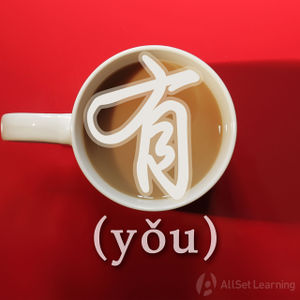Difference between revisions of "Expressing "in addition" with "haiyou""
ViktorMugli (talk | contribs) |
m (Oversjw0 moved page Expressing "In Addition" with "haiyou" to Expressing "in addition" with "haiyou") |
(No difference)
| |
Revision as of 06:51, 20 September 2012
-
Level
-
Similar to
- Expressing "and" with "he" (A1)
- Expressing "and also" with "hai" (A2)
- Expressing "except" and "in addition" with "chule… yiwai" (B1)
- Expressing "in addition" with "lingwai" (B1)
- Expressing "in addition" with "zaishuo" (B1)
- Expressing "not only... but also" with "budan... erqie..." (B1)
- Using "budan... geng" to express "not only... but also" (B2)
- Expressing "as well as" with "yiji" (C1)
-
Used for
-
Keywords
"还有" (háiyǒu) is used to express "In addition..." in a conversation. It is introducing new information to the topic the speaker(s) is/are talking about. While it's not the most challenging grammar structure, an important thing to keep in mind is that 还有 starts a completely new sentence or clause.
Examples
- 哎呀,我 今天 有 两 个 期末 考试。还有 ,必须 写 完 中文 作文。
- 今天 特别 倒霉,他 的 数学 老师 告诉 他 他的 成绩 不 太好,还有 他 的 老板 要 解雇 他。
- 普通话 很难。还有 ,专家 觉得 日语、广东话、韩语,这 三 门 语言 也 很难。



